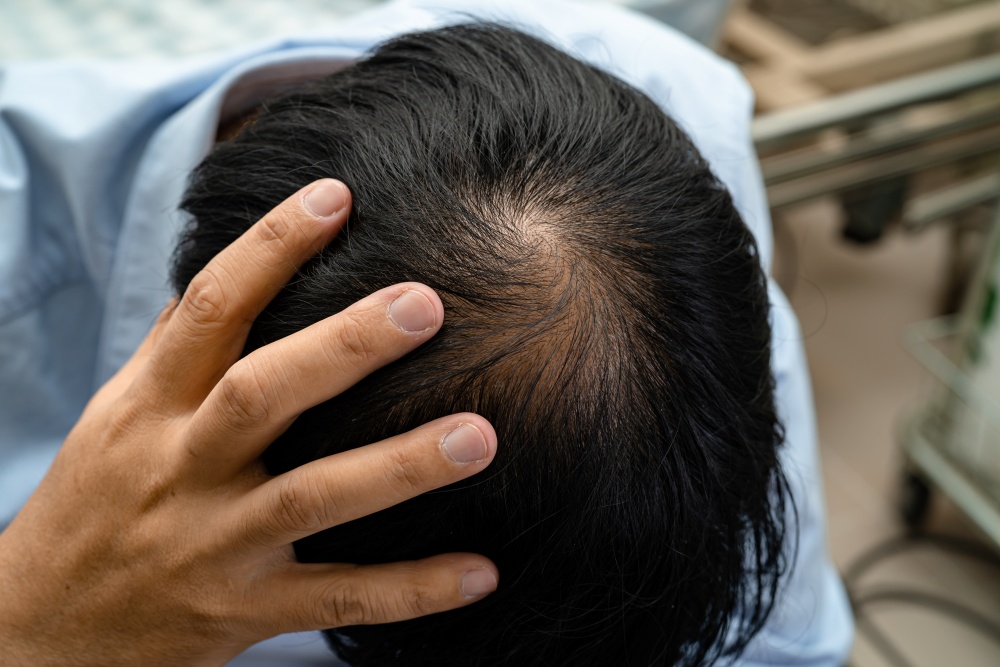How Does Hair Transplant Work? A Step-by-Step Guide to the FUE Journey
Hair loss can feel personal—even isolating—whether it’s gradual thinning or noticeable patches. For many, this change isn’t just cosmetic; it can influence self-image, confidence, and even day-to-day interactions. And while some turn to topical products or oral supplements, these options don’t always offer lasting or visible results.
That’s where surgical procedures like follicular unit extraction (FUE) come in.
By moving healthy follicles from one part of the scalp to areas with sparse growth, FUE aims to restore hair in a way that looks and feels natural. But before deciding if it’s right for you, it helps to understand how the process unfolds—from consultation to recovery and the long-term growth that follows.
Understanding the FUE Hair Transplant Procedure
Follicular Unit Extraction, or FUE, works by relocating individual hair follicles from a donor area—typically the back or sides of the scalp—to areas experiencing visible thinning or baldness. Each follicle is carefully removed and then reinserted into small openings made in the target area, where new growth can take root.
This method is often selected due to its minimally invasive nature. Instead of removing a strip of the scalp, FUE uses micro-punch tools that leave behind small, round marks. These usually heal without sutures and are barely noticeable once the hair grows out, reducing the potential risk of visible scarring.
In addition, to ensure the grafts are placed in a way that complements the patient’s existing hair pattern, scalp preparation and follicle placement are done with precision to help the final result appear natural from multiple angles.
Many individuals also choose FUE because the transplanted hair grows much like the rest of their natural hair. The recovery period is also relatively short—most people return to normal routines within a few weeks—making it a practical option for those seeking a long-term solution to hair loss without extended downtime.
The FUE Hair Transplant Process: A Detailed Breakdown
Every FUE hair transplant follows a structured, step-by-step approach tailored to each individual’s condition and goals.
The typical journey at a hair transplant clinic in Singapore, from initial evaluation to recovery, may look like:
- Consultation: Your first appointment at a hair transplant clinic like Sage Medical involves more than just examining your scalp. A full review of your medical and family history is conducted to identify possible factors influencing hair loss, such as hereditary conditions or hormonal imbalances. This helps determine whether FUE is the right path forward or if other solutions should be considered.
- Pre-Procedure Preparations: Before confirming the surgery, blood tests or additional assessments may be ordered to determine if there are any underlying issues that could interfere with healing. In some cases, hormonal profiling or scalp biopsies may be needed to rule out dermatological concerns.
- Donor Area Preparation: On the day of the hair transplant, the donor area is shaved and cleansed to create a clear, sterile working space.
- Anaesthesia and Extraction: A local anaesthetic is applied to ensure comfort throughout the process. Once the scalp is numb, a micro punch tool is used to extract individual follicles. These grafts are collected with care to maintain their integrity for reimplantation.
- Recipient Site Preparation: Small incisions are then made in the thinning or balding areas. The angle, direction, and spacing of each incision are planned to replicate your natural hair growth pattern.
- Follicle Implantation: Each follicle is placed into the prepared sites. The goal is to achieve even coverage and a natural-looking result that blends seamlessly with surrounding hair.
- Post-Procedure Care: After the procedure, you’ll receive detailed instructions on the proper aftercare, including how to wash the area, what to avoid, and which medications may support healing.
- Follow-Up Appointments: Ongoing reviews are scheduled in the weeks and months after the procedure to track recovery and ensure grafts are settling well. Adjustments or further treatment may be recommended depending on progress.
Navigating the FUE Transplant Recovery Timeline
Recovery after an FUE hair transplant isn’t instant, but understanding the general progression can help manage expectations and support proper aftercare.
What to Expect in the Initial Days and Weeks
The first few days after an FUE transplant are focused on healing and preventing complications. While discomfort is usually manageable, careful aftercare helps set the groundwork for recovery.
- Mild swelling, redness, and soreness may appear around the donor and recipient sites. These typically subside within a few days and can be eased with doctor-prescribed medication.
- Avoid sun exposure and strenuous activity during the early stages, as sweat and heat can irritate the scalp and might even increase the risk of infection or inflammation.
- Keep your scalp clean, but handle it gently. Your doctor will advise on how and when to begin washing your hair. Do not rub or pick at the area.
- Scabbing and flaking around the implanted follicles usually begin around days 3–7. This is a natural part of healing.
- Temporary shedding of surrounding hair, also known as shock loss, may occur in the weeks that follow. This is expected and typically reverses over time.
The Day After FUE Surgery: Key Considerations
The first 24 hours after FUE surgery lay the foundation for a stable recovery. While the procedure itself is complete, post-op care begins immediately and requires attention to detail.
- Attend your follow-up: This early review allows the doctor to evaluate for evidence of inflammation and ensure that the grafts remain intact.
- Clean your scalp carefully: Follow all instructions on scalp hygiene—any pressure or friction can interfere with the grafts’ ability to take root.
- Manage discomfort: Mild pain or tightness may still be present. Medications or topical applications may be prescribed to reduce irritation.
- Avoid high-impact activities: Exercise, sweating, or even bending forward can disrupt blood flow and put the grafts at risk.
- Stick to your aftercare plan: Adhering to medication schedules and avoiding unapproved products is key during this period.
- Know what to watch for: Increased redness, discharge, or persistent swelling may indicate an issue and should be flagged to your clinic.
What to Anticipate During FUE Recovery: A Closer Look

In the days following an FUE procedure, managing healing and discomfort becomes a key focus. Taking the right steps during this period can help support long-term recovery.
- Managing Swelling and Discomfort: Mild swelling around the forehead or eyes may develop. Applying cold compresses—without direct contact on the grafted area—can help ease this. Some clinics may use bandages or wraps around the donor site to manage pressure and reduce exposure to external contaminants.
- The Healing Process: Scabbing is expected as the scalp heals. These crusts will fall off naturally over time. Picking or scratching at them risks dislodging follicles or introducing bacteria.
- Medication Management: You may be prescribed antibiotics as a precaution against infection. Painkillers or anti-inflammatory drugs could also be recommended to reduce tenderness or swelling. Always follow prescribed doses closely, even if symptoms seem manageable.
The Long-Term Journey: Hair Growth After FUE
Recovery doesn’t end once the scalp heals. Hair growth unfolds gradually, with each phase reflecting the body’s natural cycle of repair and renewal.
Early Recovery Phase
In the first few weeks, the focus is on healing. The scalp may still show signs of redness or scabbing, and it’s normal for the area to look uneven. These surface changes are part of the body’s adjustment to the newly placed follicles.
Shedding Phase
By the second or third week, you may notice some of the transplanted hairs falling out. This is a common response as the follicles enter the resting stage—a temporary pause in growth triggered by the stress of surgery. It’s expected and doesn’t affect long-term outcomes.
Initial Hair Growth
New growth typically begins around the third month. These early strands are often fine and short, but they indicate that the follicles are starting to function again.
Significant Hair Growth
Between months four and nine, hair becomes noticeably denser. The strands thicken, coverage improves, and the overall appearance begins to look more consistent.
Final Results
By the 12-month mark, most of the growth has stabilised. While minor changes may continue beyond this point, the hair usually blends evenly with the surrounding areas, offering a fuller look.
Take the Next Step: Contact Us for Your FUE Hair Transplant Consultation
Choosing to address hair loss can feel like a big decision—but you don’t have to navigate it alone. At our hair clinic in Singapore, every FUE procedure begins with a thorough consultation to determine if this approach suits your goals and hair health.
If you’re wondering how long a hair transplant takes from start to finish or what kind of progress timeline you can expect, our specialist will walk you through each stage clearly—no guesswork, no hard sells. From your first visit through to post-procedure reviews, we focus on practical steps and realistic outcomes.
Get in touch with our team to learn more about the full process, what recovery looks like in real time, and how long-lasting results can be achieved through careful planning and care.




